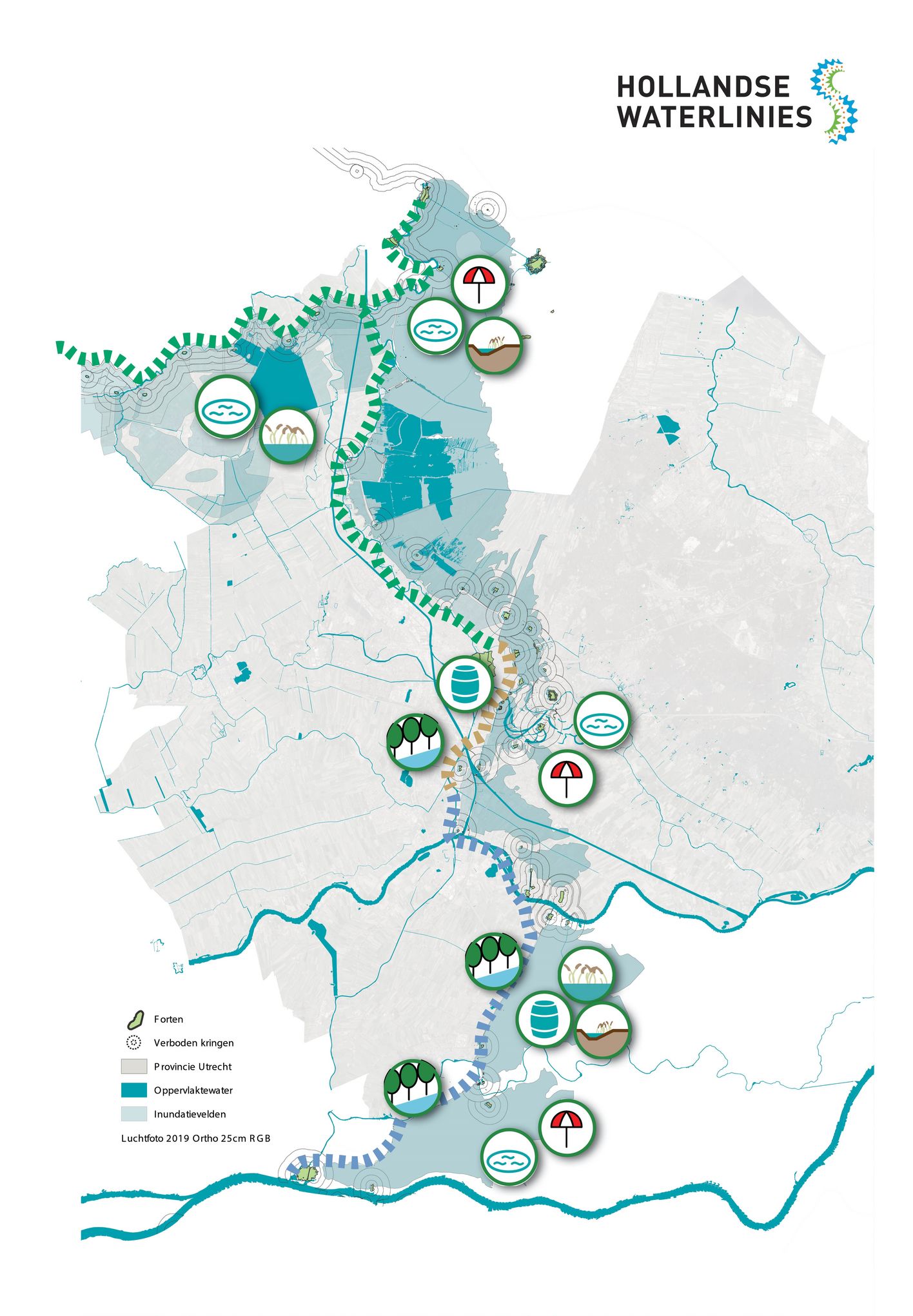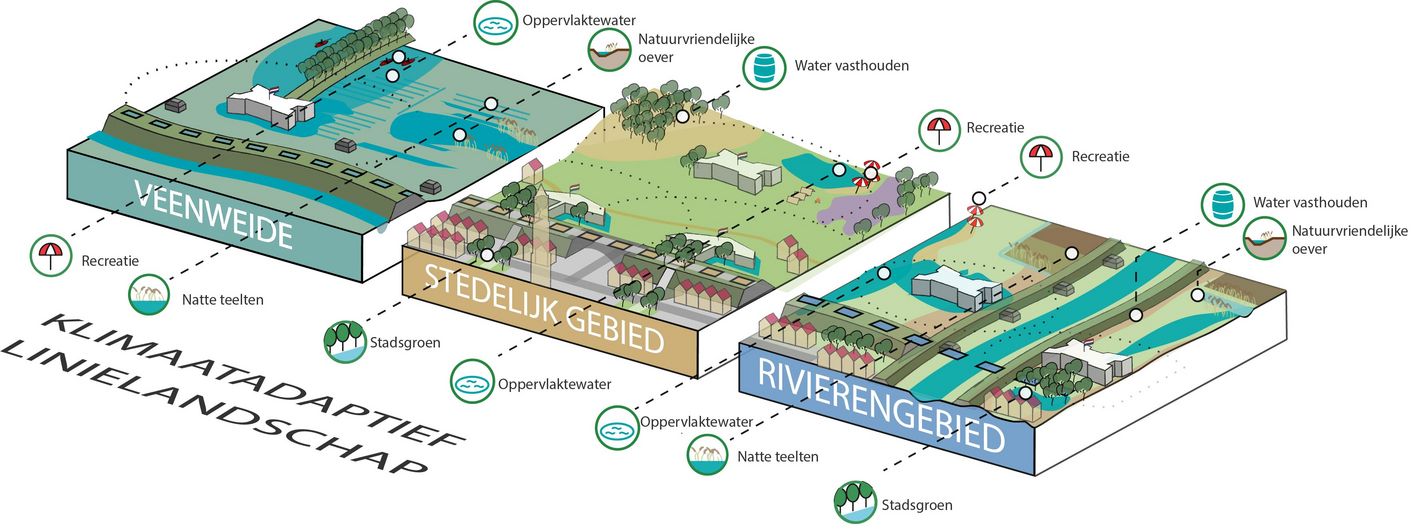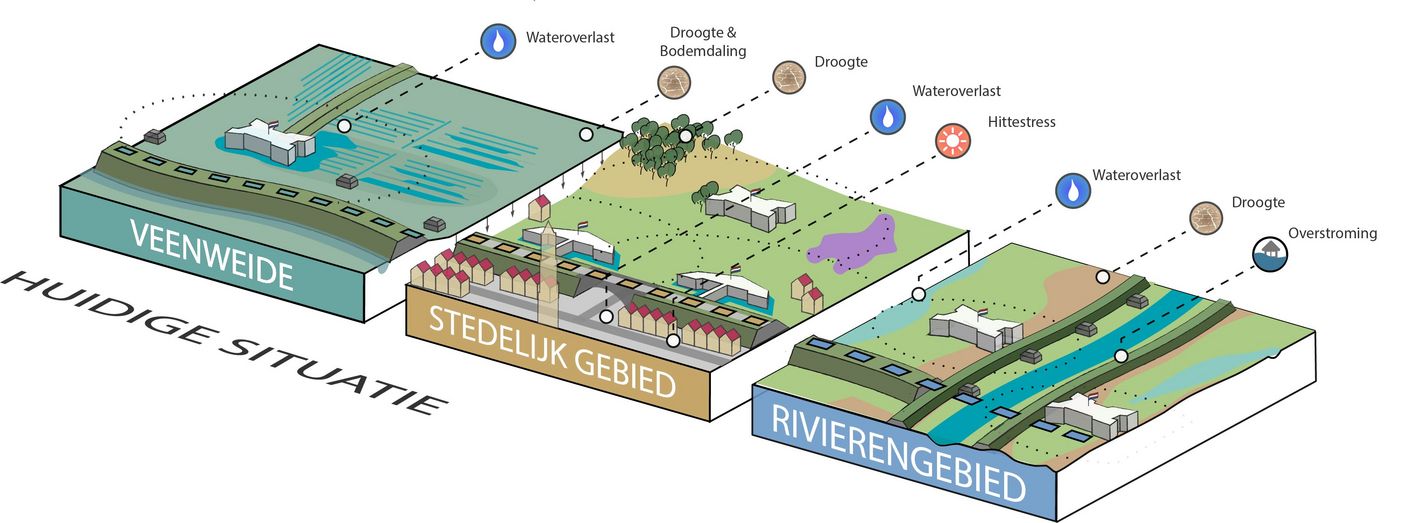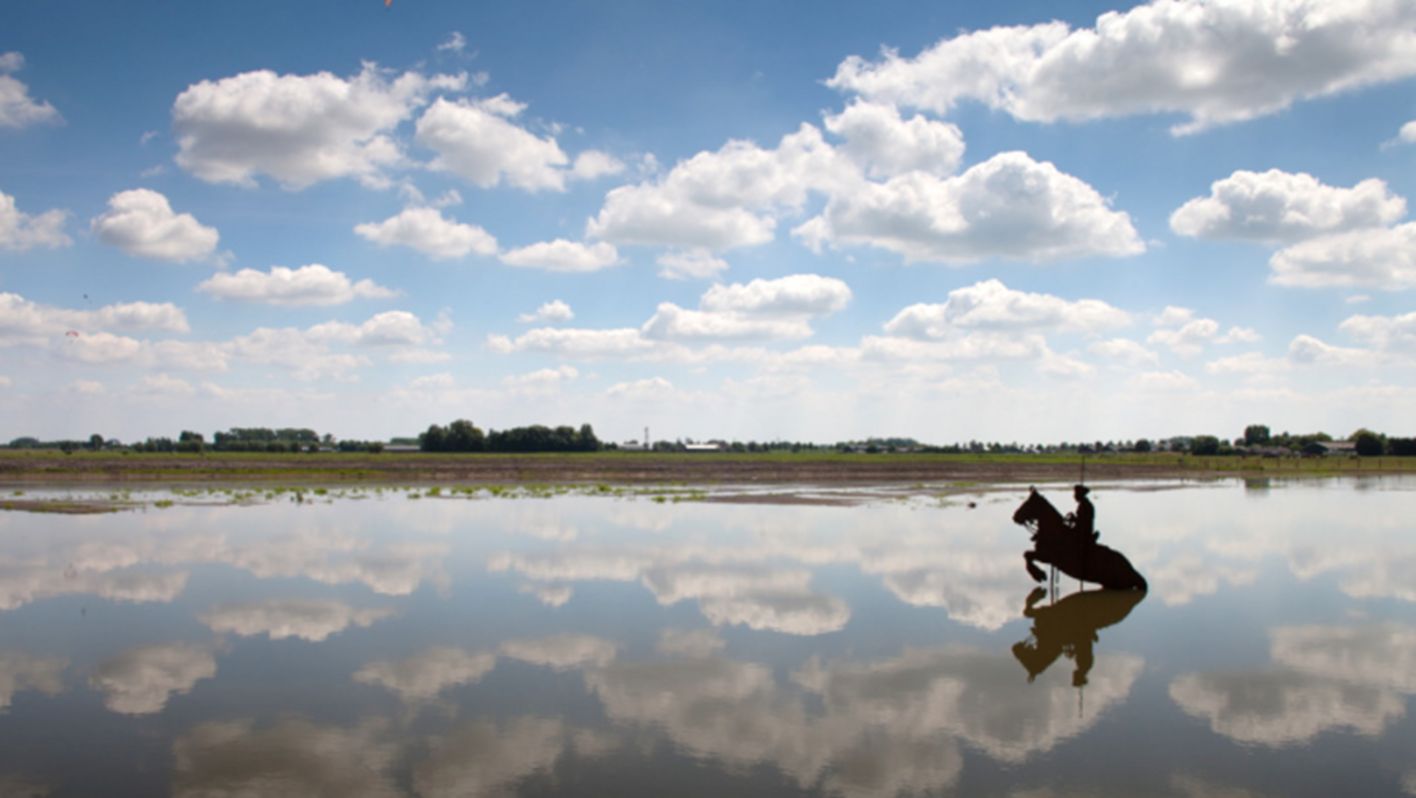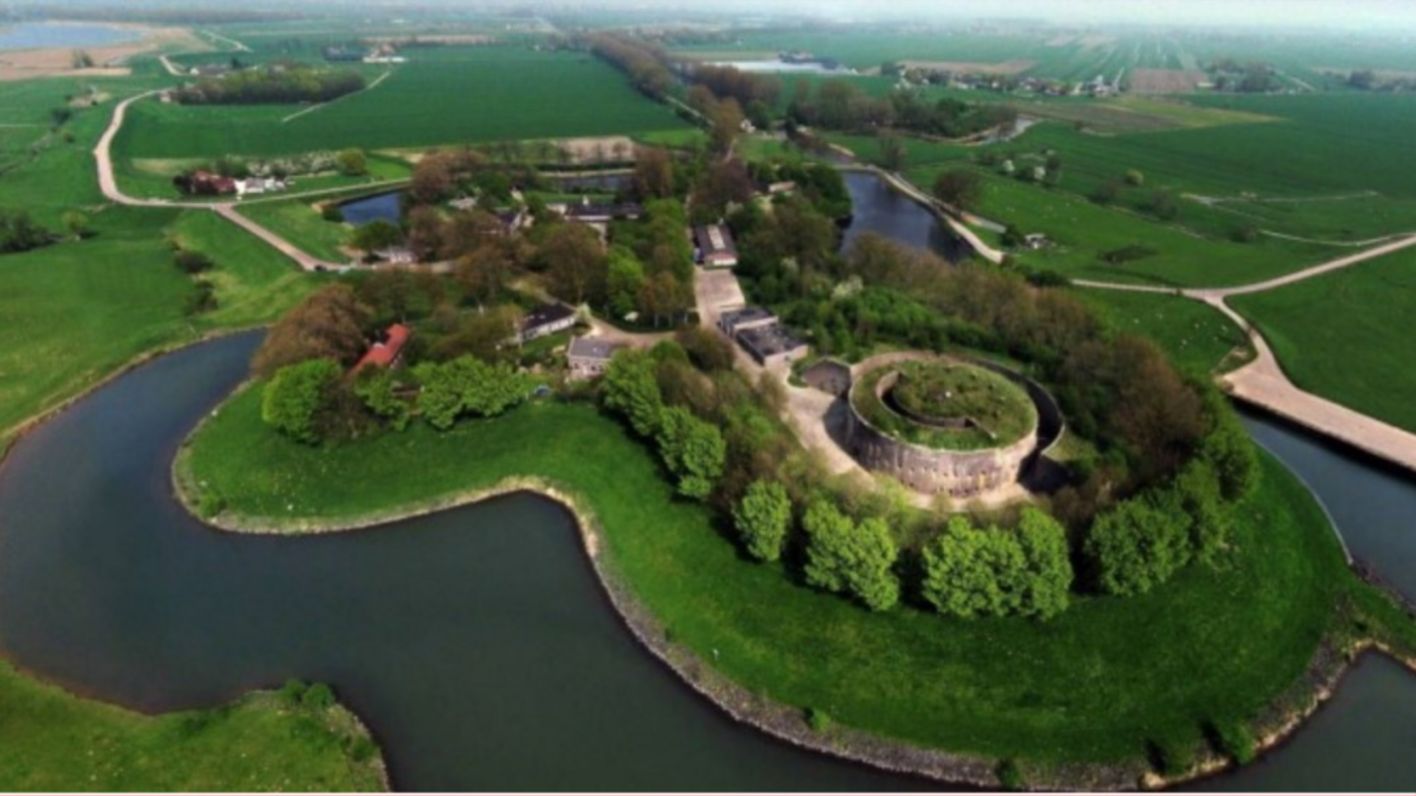Climate opportunities in Utrecht’s Dutch Water Defence Lines
Witteveen+Bos was asked by the Province of Utrecht to identify the climate opportunities that the Dutch Water Defence Lines have to offer. Following the end of the Second World War, the Defence Lines were no longer needed for military defence. The Defence Lines landscape, however, remained largely intact and now offers space for recreation, nature, culture and agriculture.
The Province of Utrecht’s aim is to use the open, green landscape of the Dutch Water Defence Lines to help tackle the urgent task of climate adaptation. For this project, we investigated how the Lines can be used to again protect our country – this time against climate change. The first step involved identifying climate opportunities within the landscape. These opportunities, which can serve as a stepping stone to a climate-robust Defence Lines landscape, were developed into a climate opportunities map.
The different types of landscape within the Defence Lines area were used to identify the climate challenges and opportunities. These results were brought together in a climate opportunities document with an easy-to-read opportunities map and several cross sections. The underlying landscape within the province of Utrecht, which varies considerably, significantly affected the layout, execution and design of the Defence Lines. As a result, the Lines are different in each area. The wet moorlands in the north, for example, offered room for large inundation fields, whereas the high ground around the city of Utrecht made inundation difficult, necessitating additional defences. We therefore tailored measures in this project to the cultural history of the area and to the landscape. The result is the creation of climate-robust Defence Lines that enhance spatial quality and draw attention to their cultural-historical heritage.
